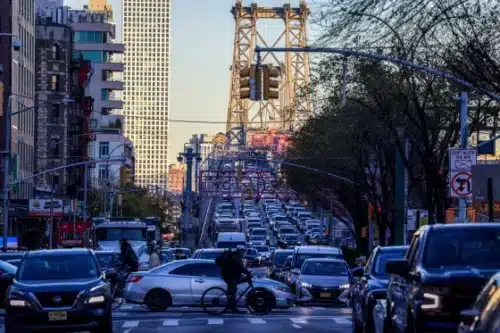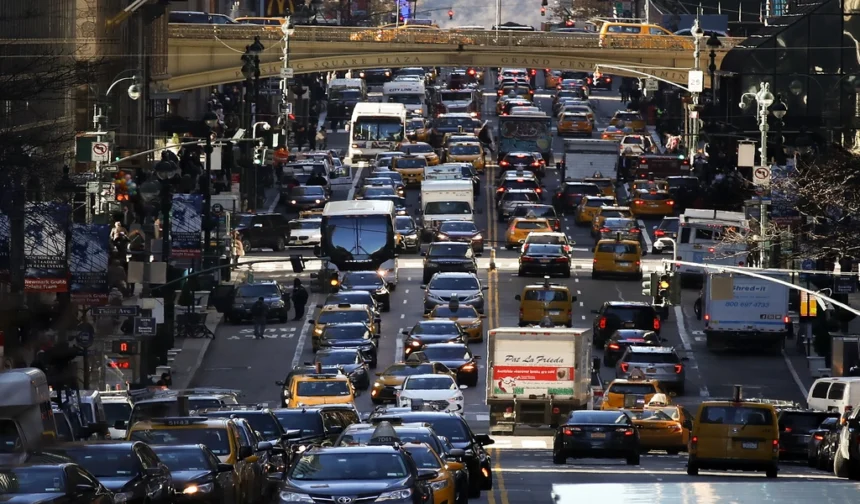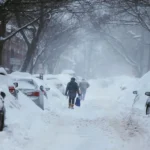New York City is the first city in the United States to successfully implement a congestion fee system for motorists. Car drivers can earn up to $9 (£7) per day, with different rates for other vehicles.
The congestion zone includes a region south of Central Park. This region includes well-known locations such as the Empire State Building, Times Square, and the financial district centered around Wall Street.
Although the plan is intended to alleviate New York City’s severe traffic problems and raise billions of dollars for the public transportation network, it has been met with opposition from a well-known New Yorker and the incoming President of the United States, Donald Trump.
Kathy Hochul, the governor of New York State, initially proposed implementing a congestion charge two years ago; however, the proposal was postponed and changed due to protests from many commuters and companies.

Exploring the Impact of the $9 Daily Fee on New York Drivers
She halted implementing a plan in June, citing “too many unintended consequences for New Yorkers.” The new plan brings back the original plan.
During peak hours, most drivers must pay $9 once daily to enter the congestion zone, while at other times, the fee is $2.25.
During peak hours, larger trucks and tourist buses must pay a tax of $21.60 to enter Manhattan, while smaller trucks and buses not used for commuting must pay $14.40.
Much criticism has been of the charge, including protests from associations representing taxi drivers.
However, the most prominent criticism of the system has come from President Trump, who was born and raised in New York and pledged to end the scheme when he returns to office this month.
Additionally, Republicans in the area have already requested that he step in.
In November, Congressman Mike Lawler, representing a suburban district just north of New York City, requested President Trump to commit to “ending this absurd congestion pricing cash grab once and for all.”
A judge rejected an eleventh-hour attempt by officials from neighboring New Jersey state to block the proposal on Friday because it would harm the ecology in neighboring communities.
According to INRIX, a company that specializes in the study of traffic data, New York City was recognized as the most congested urban area in the world for the second year in a row in that particular year.
According to the report, during peak morning hours in the first quarter of the previous year, vehicles in downtown Manhattan traveled 11 miles per hour (17 kilometers per hour).

Salman Ahmad is known for his significant contributions to esteemed publications like the Times of India and the Express Tribune. Salman has carved a niche as a freelance journalist, combining thorough research with engaging reporting.














